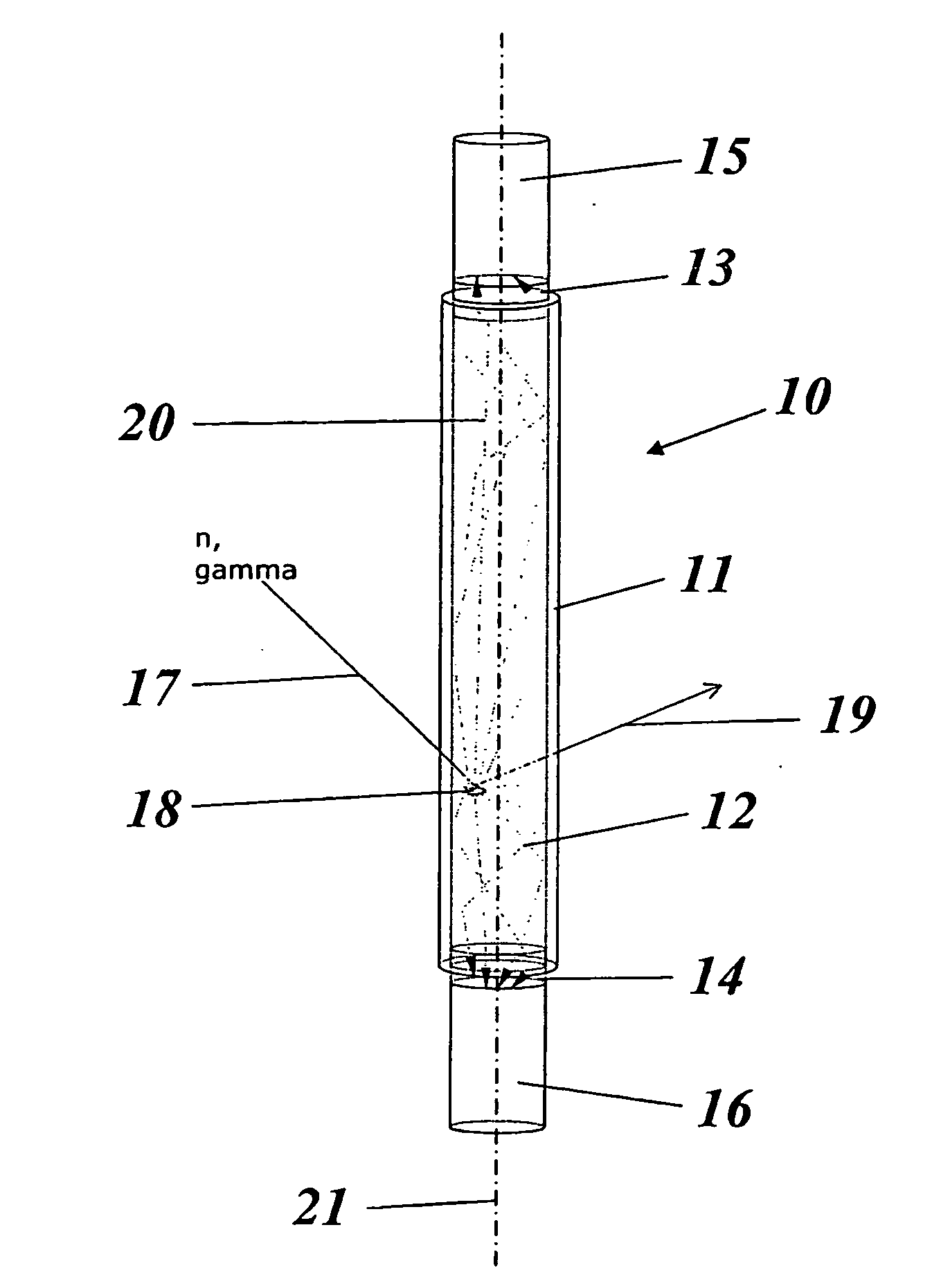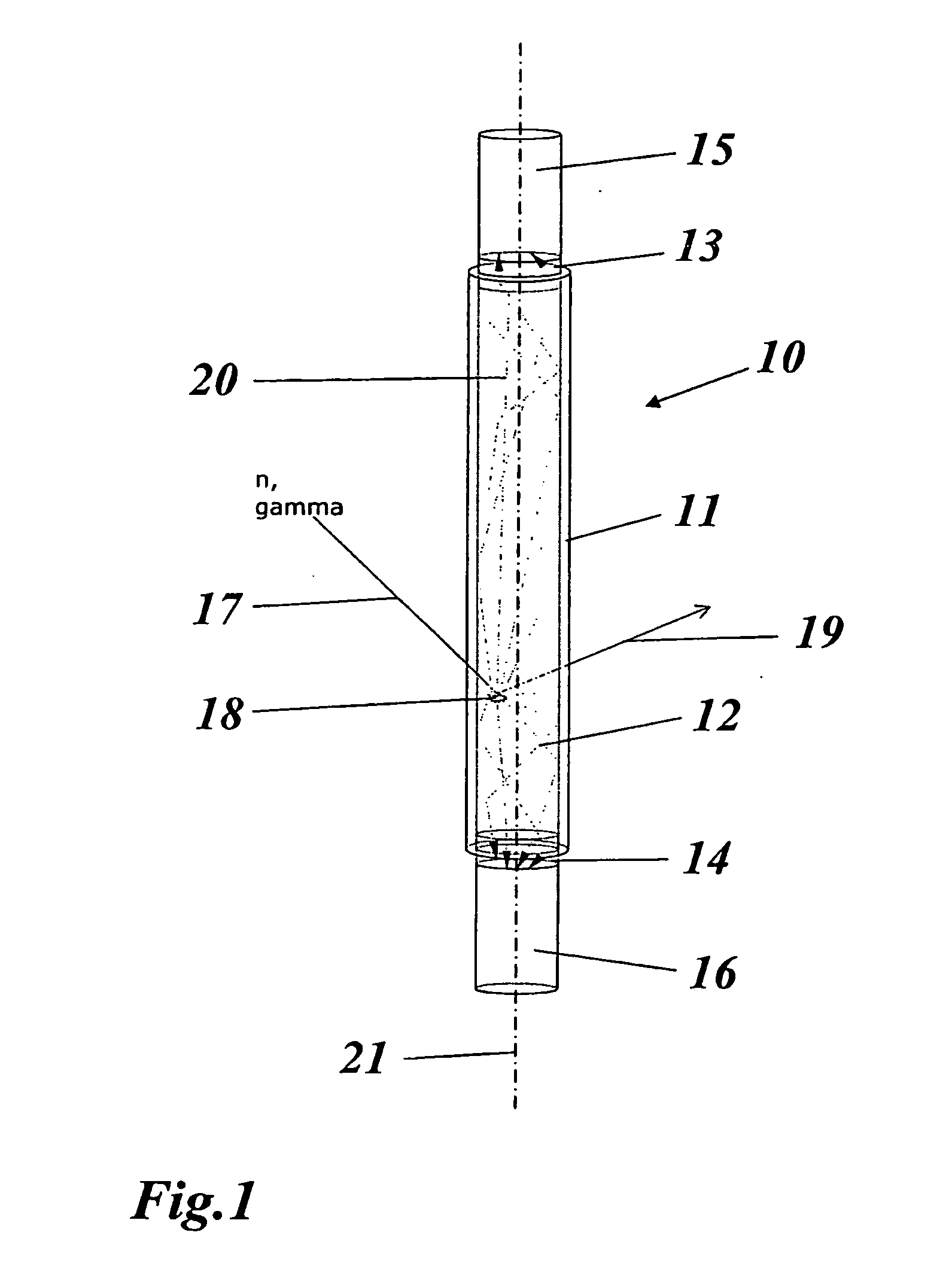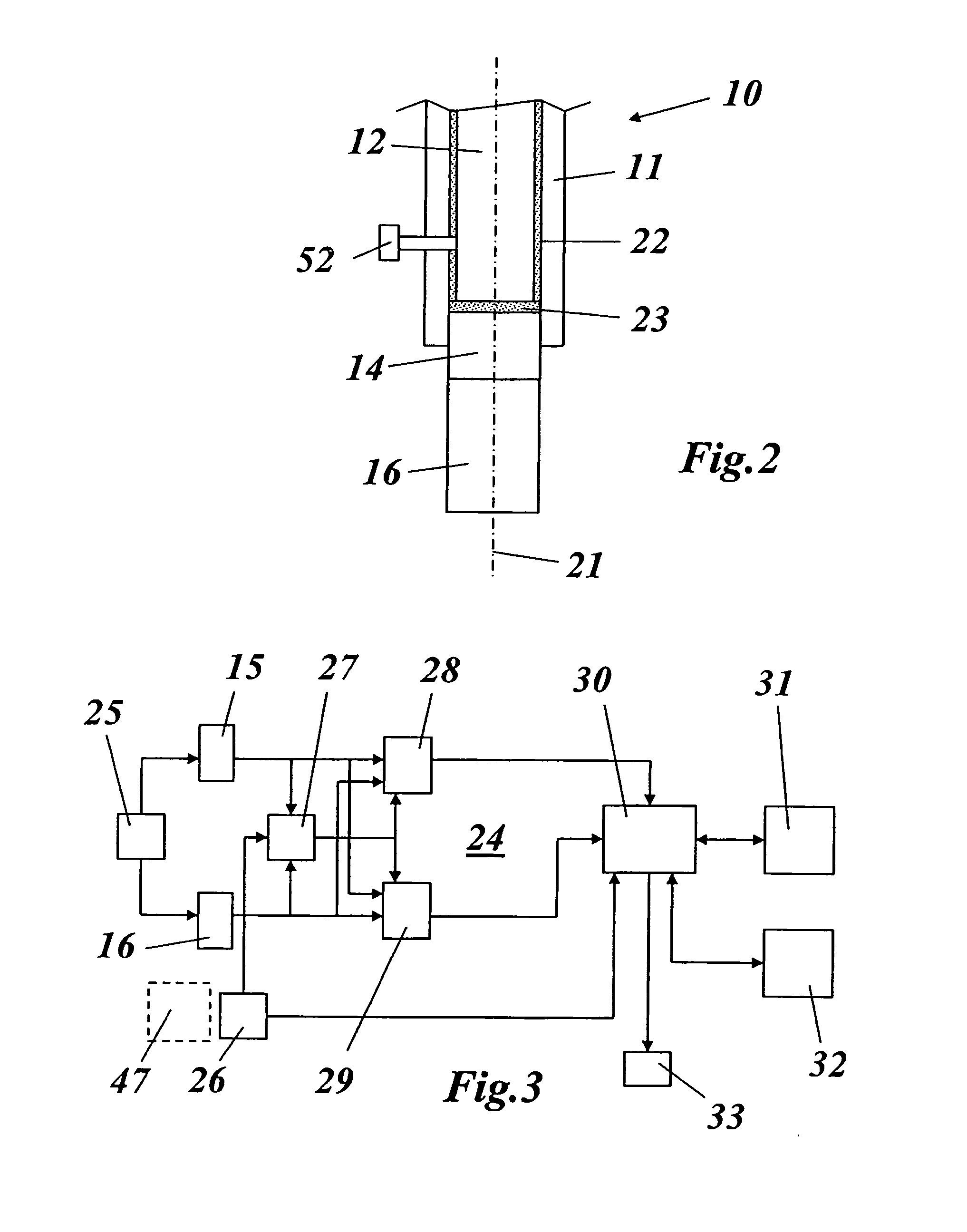Method for monitoring an unknown container or the contents in a volume, monitoring system for being used with said method, and radiation detector for such a monitoring system
a technology for monitoring containers and contents, applied in fire alarm radiation actuation, instruments, fire alarms, etc., can solve the problems of limiting the scalability of the device, preventing isotope identification, and poor energy resolution, and achieve the effect of high light yield
- Summary
- Abstract
- Description
- Claims
- Application Information
AI Technical Summary
Benefits of technology
Problems solved by technology
Method used
Image
Examples
Embodiment Construction
[0019]It is therefore an objective of the invention, to provide a method for monitoring the unknown contents in a volume, a respective monitoring system, and a radiation detector for being used in such a monitoring system, which avoid the disadvantages of the prior art methods, systems and detectors, have an improved resolution, and are simpler to install and operate.
[0020]This objective is achieved by the solutions according to claims 1, 14 and 23.
[0021]The invention proposed here relies on a pulse shape discrimination method discriminating between fast neutrons and gamma rays penetrating into the noble gas based detector from the outside. This allows the deployment of the apparatus for the assessment of materials as described below.
[0022]Noble gas in general is a price worthy scintillator of high light yield. Noble gases, permitting discrimination between neutron and gamma ray events on grounds of their different pulse shapes, allow the design of scalable, multifunctional detector...
PUM
 Login to View More
Login to View More Abstract
Description
Claims
Application Information
 Login to View More
Login to View More - R&D
- Intellectual Property
- Life Sciences
- Materials
- Tech Scout
- Unparalleled Data Quality
- Higher Quality Content
- 60% Fewer Hallucinations
Browse by: Latest US Patents, China's latest patents, Technical Efficacy Thesaurus, Application Domain, Technology Topic, Popular Technical Reports.
© 2025 PatSnap. All rights reserved.Legal|Privacy policy|Modern Slavery Act Transparency Statement|Sitemap|About US| Contact US: help@patsnap.com



